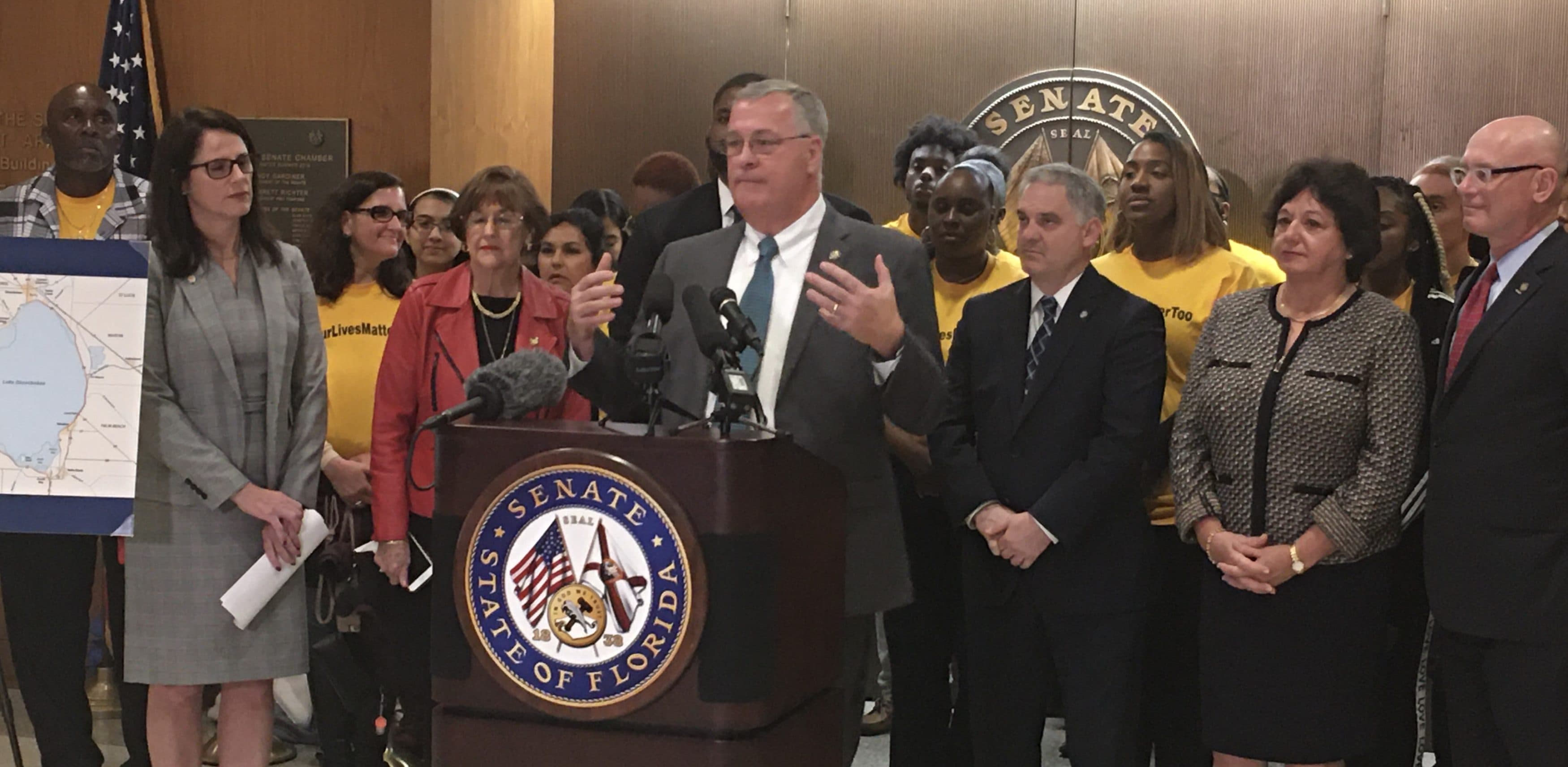
A bipartisan group of lawmakers representing areas around Lake Okeechobee came together Tuesday to talk water quality solutions.
Those conversations will continue as the 2020 Legislative Session does, via the newly-christened Lake Okeechobee Working Group.
The goals: to identify best practices to reduce excess water in Lake O; to bring together various levels of government to protect the lake; to find ways to reduce discharge from the lake to coasts.
Rep. Tina Polsky, a Boca Raton Democrat, described the centrality of Lake O’s ecosystem to the Orlando area and points south.
The first-term Democrat asserted that “Floridians want and deserve solutions” regarding “water quality” and “handling the massive amounts of water that flow in … during the summer months.”
“Floridians need certainty,” Polsky added. “A forum to better understand and advocate for these solutions, so that Floridians can know the difference between science and speculation.
Among the drivers of that certainty: completion of the Herbert Hoover Dike restoration and other infrastructure projects.
“This is not a working group that will point fingers … politicize water challenges … or attempt to turn one region against the other,” Polsky added.
Sen. Ben Albritton, the Republican Agriculture Chair in the Senate, continued the bipartisan messaging.
His goals include continuing to discuss storage and treatment projects north of the lake, “shared challenges which all begin north of Lake Okeechobee.”
“In an effort to improve Lake Okeechobee’s water quality, support businesses tied to the ecosystem and provide relief to the coastal estuaries impacted by Lake Okeechobee releases, this legislative working group will meet periodically,” Albritton said, in pursuit of “science-based solutions.”
It is uncertain how much will be accomplished in the 2020 Session.
Albritton said there would be “continued robust discussion about what we can do here in this legislative process to make Lake O everything we hope she can be.”
“This press conference isn’t about future funding,” Albritton said, though noting that “it’s pretty early to have discussions” about specific allocations.
Other members of the group include Sen. Kathleen Passidomo; Sen. Gayle Harrell; Sen. Kevin Rader; Rep. Byron Donalds; Rep. Cary Pigman and Rep. MaryLynn Magar.
The working group received a warm reception from local officials in the region, including the mayors of Clewiston, Belle Glade and Pahokee.
“Ninety-five percent of the water in Lake Okeechobee comes from the north, and yet Lake Okeechobee currently does not have an infrastructure for slowing it down water and treating it before it arrives in the lake. This working group is a win-win for those who care about Lake Okeechobee and those who want to see fewer Lake Okeechobee discharges in the future,” Clewiston Mayor Mali Gardner said.
Also showing support was Scott Martin, a professional fisherman and founder of Anglers for Lake Okeechobee.
“Florida fishermen depend on a clean and healthy Lake Okeechobee, which in turn helps ensure a clean and healthy coastal fishing habitat. This working group will help ensure the focus remains on scientific solutions that will help slow the flow of water that fills up Lake Okeechobee, and allow the lake we love to flourish once again,” he said.




One comment
Palmer Tom
February 5, 2020 at 8:15 am
There is infrastructure north of Lake Okeechobee capable of treating pollution coming downstream from farms and urban areas. It is the Kissimmee Chain of Lakes and the restored Kissimmee River, which will slow and treat what’s coming downstream. There’s a lot of legacy pollution from the Taylor Creek-Nubbins Slough area, but there’s a lot of nutrients in the lake itself from past unregulated practices and sometimes the plea to look north of the lake is a diversion to ignore that.
Comments are closed.